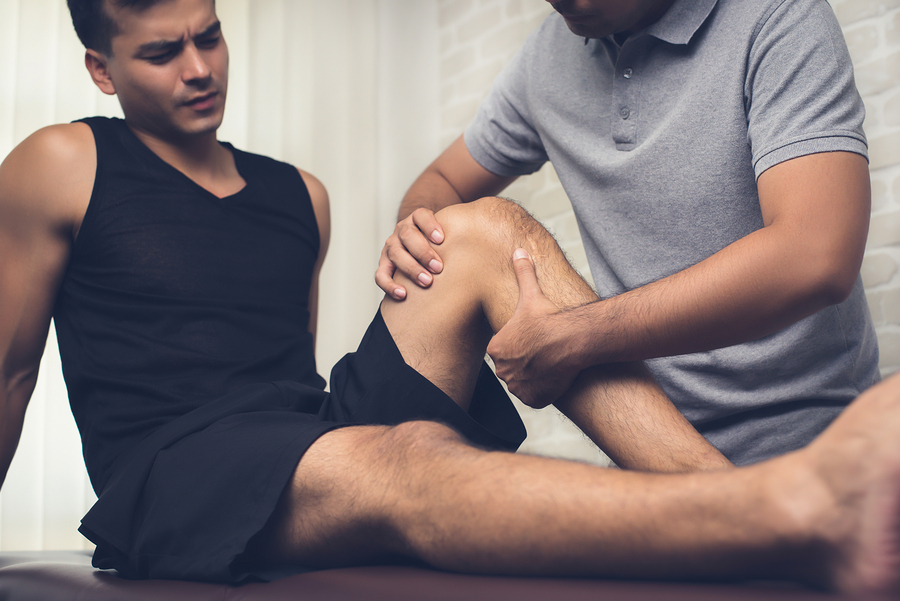When you visit your Highett physiotherapist, the first thing you’ll talk about is the type of pain you’re experiencing, then we’ll try to uncover how that pain came about.
This allows us to prescribe the perfect treatment for you – from here, we get to work building strength in your body and eventually eliminating your pain.
Of course, that isn’t the only thing your physio can do for you!
Before we can set you up on the path to recovery, we might need to take steps to reduce your felt pain.
Sometimes pain doesn’t just resolve overnight – after all, you still need to work, look after the kids, and run your usual errands.
Luckily, your Highett physio has a few tricks up their sleeve…
An introduction to massage in physiotherapy
We know what you’re thinking: sure, a massage might feel nice. But it can’t relieve muscle pain, can it?
You might be surprised to learn the truth!
When most of us think of massage, we think of relaxation massage.
This type of massage is all about making you feel better – it’s nice and gentle, using light, soothing strokes.
That isn’t what your Highett physiotherapist offers!
Unlike relaxation massage, your physio provides a different type of massage. Using their knuckles and elbows, your physio targets and relieves distressed muscles, providing a deeper, more intense massage.
Make no mistake, this is more intense than a light massage. And as such, it’s an effective way to relieve your muscle pains!
How massage relieves muscle pain
While there are countless varieties of massage out there, generally speaking they all run on the same two principles.
The first is mechanical response.
Massage relieves pain by relaxing muscle tissue, which are less prone to painful contractions and spasms. Additionally, massage also eases compression, allowing your muscles to function normally.
Not to mention, massage also increases blood circulation which enhances the delivery of oxygen to the muscles, reducing swelling and removing waste products.
The second is relaxation response.
Simply put, when you’re in a good mood, your brain releases serotonin, a chemical that positively affects emotions and thoughts, making you feel happy and relaxed!
Remedial vs deep-tissue massage
When talking about physiotherapy and massage, you’ll often hear two phrases pop up time and time again:
- Remedial massage
- Deep-tissue massage
While broadly speaking both types have the same goal – to relieve muscle pain – they aren’t the same. Both types of massage tackle different pains, and use different approaches to do so.
Remedial massage
Remedial massage is an umbrella term for massage that focuses on relieving pain and treating muscles that are:
- Damaged
- Knotted
- Tense
- Immobile
This type of massage is suitable for a wide range of aches and pains, but is particularly useful for cases of muscle tightness, tennis elbow, back and neck pain and frozen shoulder.
By reducing stiffness and swelling, remedial massage reduces your pain. Additionally, it also improves joint mobility, allowing you to get back into your routine.
Deep-tissue massage
Like the name suggests, deep-tissue massage is a type of remedial massage that focuses on relieving pain in the deeper layers of your muscle.
It’s particularly useful for relieving pain that’s the result of day-to-day activities such as work or exercise. Pressure is applied to the affected parts of your body using long, firm strokes to loosen tight muscles.
What makes it different from other types of remedial massage? In a single word, pressure.
Using their knuckles, thumbs and elbows, your physiotherapist applies pressure to deeper layers of your muscles and connective tissue.
Oftentimes, this overlaps with trigger point massage, where we directly target points that cause pain or referred pain in other parts of your body.
Getting qualified for remedial massage
Here’s the thing: while anybody can offer a nice, relaxing massage, very few are qualified to provide remedial massage that properly targets the source of your muscle pain.
In order to register as a physiotherapist, all applicants need to complete a Bachelor’s Degree in physiotherapy as a minimum. Many of these courses will also cover the principles of remedial massage techniques.
Other physio treatments
Of course, massage on its own isn’t always enough to eliminate your pain. That’s why your Highett physiotherapist combines it with a range of other treatments to provide the best possible outcomes.
For example, massage is often used as a prelude to physical therapy.
After all, it can be hard to perform stretches and exercises when your muscles are screaming out in pain!
Remedial massage also pairs up quite nicely with dry needling.
Combining acupuncture with a modern understanding of the human body, dry-needling relieves trigger points that might be hard to reach otherwise.
Find out how our Highett physio uses massage to help relieve your pain
Sure, you can receive remedial massage from a massage therapist.
However, they’re only qualified to provide massage. And in our experience, many cases of muscle and tissue pain require more than just massage to properly resolve.
That’s where your Highett physiotherapist comes in.
With location in Highett, Physio AUS offers unique solutions tailored for your musculoskeletal pains. Remedial massage is just one of the tools in our proverbial toolbox.
Book your appointment today. Alternatively, give our clinics a call if you have any questions.
- Call our Highett physio on (03) 9525 6077

 1300 392 552
1300 392 552

Leave A Comment